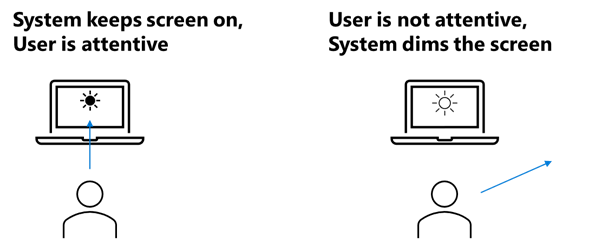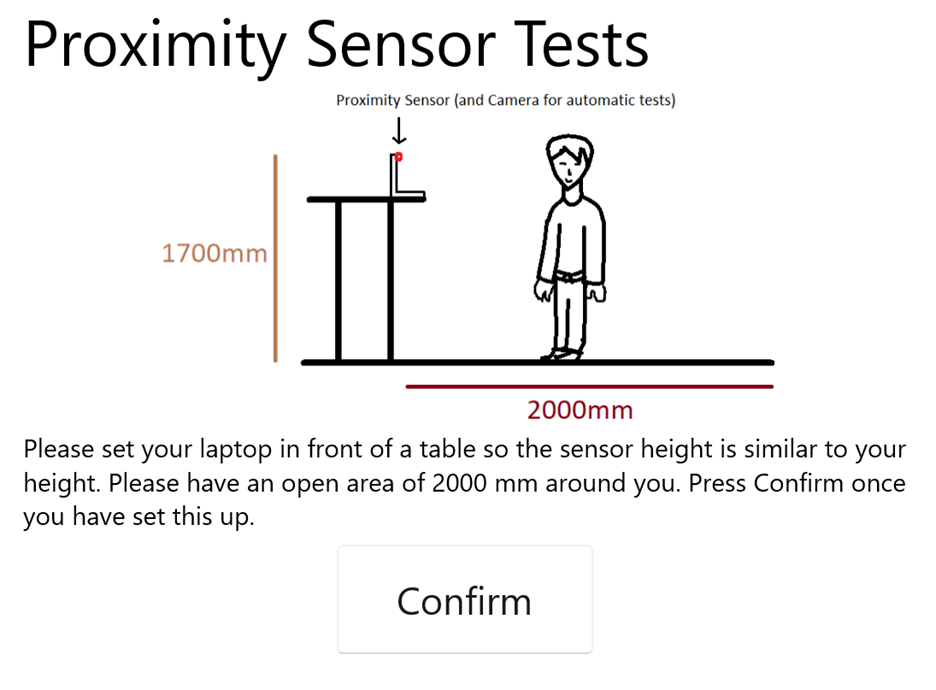Adaptive Dimming
This section provides an overview of the various experiences enabled by Windows 11's presence sensing features. Each experience can be enabled independently, however, Microsoft encourages the implementation of as many of these features as possible for a given hardware configuration.
Functional overview

Adaptive Dimming: When the user is sitting in front of the device with the display on, and it is detected that the user is not attentive, the operating system will dim the display. This scenario makes use of the Attention Awareness sensor which can be made available to other applications. The dim state leverages existing dim power settings.
Note
Adaptive Dimming is supported on Windows 11 Version 22H2 and later.
Tip
User engagement is generally considered based on face yaw angle. Microsoft recommends that engagement be defined with a yaw angle +-45 degrees relative to the perpendicular of the sensor (assuming user is sitting in front of sensor). No recommendations regarding face pitch or roll.
Debounce mechanisms
User is repeatedly moving in and out of the user engaged/unengaged threshold
The state machine will wait at least 5 seconds between human presence dimming to prevent the system from repeatedly switching between engaged and unengaged states. Hysteresis is provided at the OS service layer and this should be taken into account. The OS service will not take into account device-level hysteresis.
Exceptions
In any scenario that takes in a power request from the OS, dimming will not be executed. This applies to scenarios such as a video, ongoing call, and so on. This behavior will mimic the current power management schema for current "timeout-based" locks. This is not configurable to the user since these exceptions are only activated at the kernel level.
Holistic experience benchmarks
This section defines what the user should experience when using this feature, regardless of the hardware facilitating the experience.
| Measure | Metric | Comments |
|---|---|---|
| "Accuracy" - User Intent Recognition | >95% Pass Rate (determined by number of successful Test executions divided by total executions) for each scenario | |
| Attention Awareness Latency - Average | <2 seconds | |
| Attention Awareness Latency - Maximum | <5 seconds | |
| External monitor metrics | Same as internal | This is subject to change based on experimentation and further user research studies |
Accuracy - User Intent Recognition Framework:
| Measure | Description | Target |
|---|---|---|
| False Positives | The awareness sensor indicates that the user is engaged but the user is not attentive to the device. | <5% |
| False Negatives | The awareness sensor indicates that the user is not engaged but the user is engaged/interacting with the device. | <5% |
Directly measured: The PC placed on a standard desk, 30 inches (76.2 cm) off the floor. The user approaches the desk and chair from >1.2m away. See Figure below. This concept is only used for consistency of measurement.

Example settings
A simple on/off toggle is made available to the user to dim the display when a user looks away. In the Windows 2023 release, an additional toggle is available, to enable/disable the feature when an external monitor is connected. This is checked on by default.
Windows 11, version 22H2 and above
